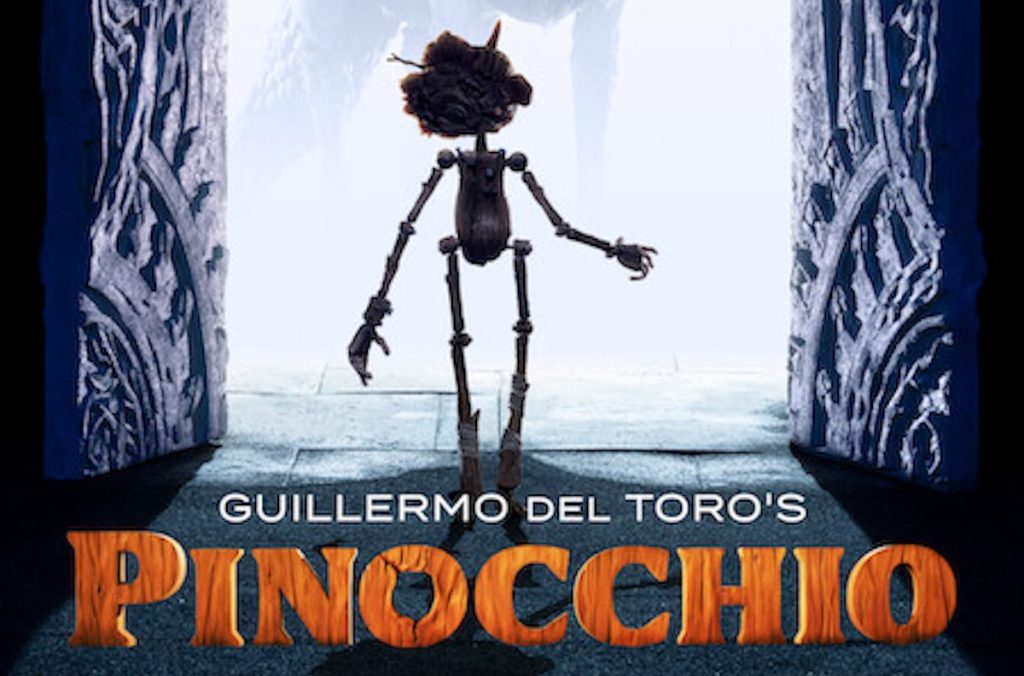Guillermo del Toro’s Pinocchio is most definitely NOT the Pinocchio you remember from childhood, but rather a hauntingly sad, extremely well-crafted stop motion animation art film that’s probably more appealing to adults than to children.
Gepetto the woodcarver is still there, but now he’s living in Italy during Mussolini’s fascist regime and mourning his way through the grief of the loss of his beloved son Carlo. One drunken night he crafts a puppet that resembles his lost boy and soon the puppet Pinocchio, thanks to the spell of an enchanted Wood Sprite, is dancing wildly around the room, the town, and all around a very dangerous Italy.
No longer Jiminy Cricket, Sebastian J. Cricket is there instead, to report on the journey as a narrator and a writer trying to pen a memoir, as well as chronicling Pinocchio’s many misadventures. He finds his way to a young Nazi school, a bizarre carnival (that’s somewhat reminiscent of del Toro’s most recent film, Nightmare Alley), and inside a whale’s stomach, as well as a few otherworldly adventures.
Though the oft-told story does resonate as a meditation on the fragility of life and love, the details of the beautiful animation are by far the most impressive part of the film. You can see the dirt under Gepetto’s nails, the hand sewn patches on his clothes, and the tiredness around his eyes, for example. And each of the main characters has their own distinct palette created to evoke a certain mood for their scenes.
To hear del Toro discuss the level of patience and precision required to create this film at last week’s Santa Barbara International Film Festival Cinema Society (link here for video) — Del Toro said it took 1,000 days of shooting with more than 60 units shooting at the same time — is a masterclass in this type of animated filmmaking, as is the film itself. I can’t imagine it won’t be one of the top contenders for Best Animated Film in this year’s Academy Awards.
Pinocchio is now screening in select theaters and will be on Netflix December 9.
Support the Santa Barbara Independent through a long-term or a single contribution.

